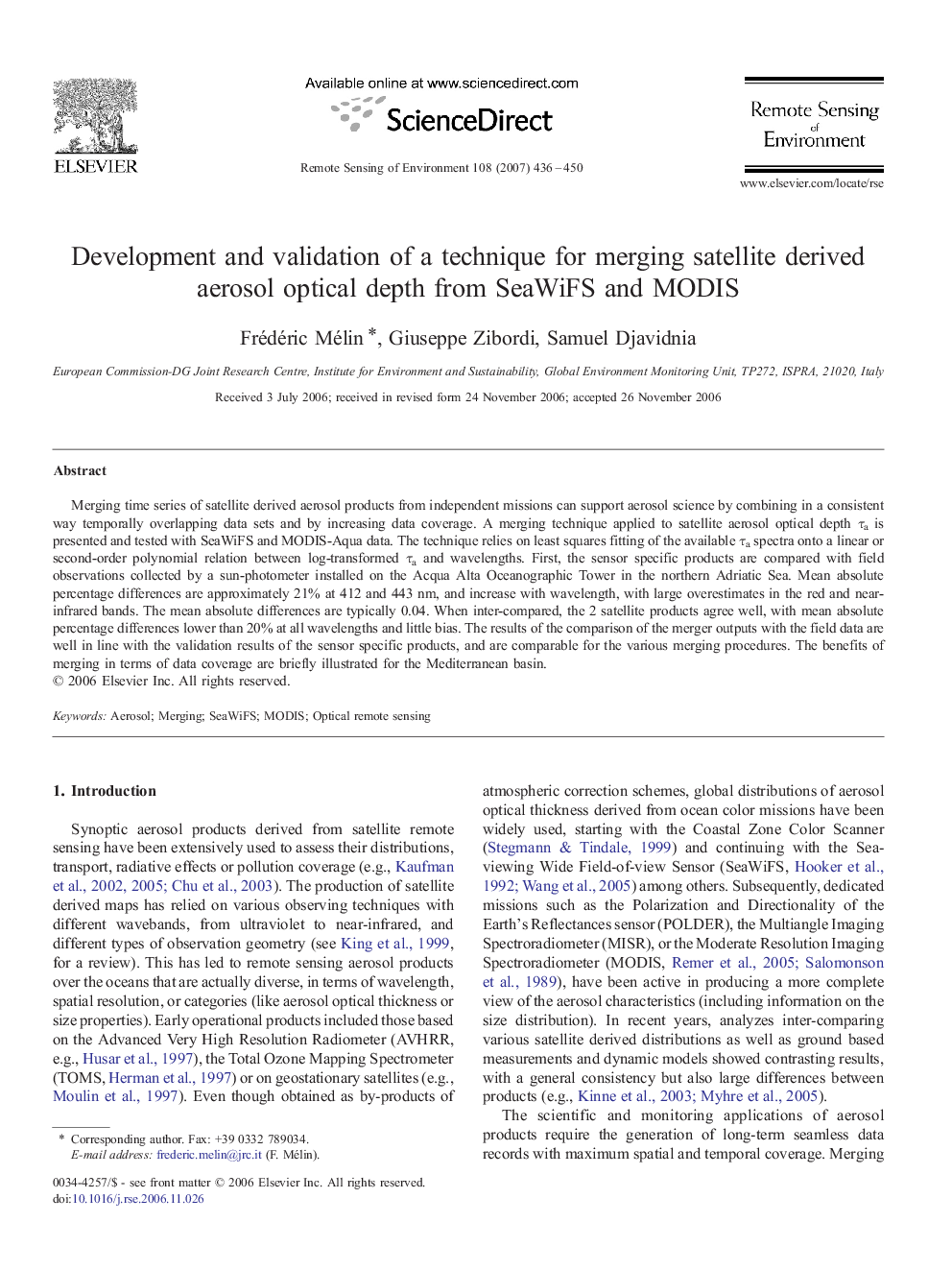| Article ID | Journal | Published Year | Pages | File Type |
|---|---|---|---|---|
| 4460728 | Remote Sensing of Environment | 2007 | 15 Pages |
Abstract
Merging time series of satellite derived aerosol products from independent missions can support aerosol science by combining in a consistent way temporally overlapping data sets and by increasing data coverage. A merging technique applied to satellite aerosol optical depth Ïa is presented and tested with SeaWiFS and MODIS-Aqua data. The technique relies on least squares fitting of the available Ïa spectra onto a linear or second-order polynomial relation between log-transformed Ïa and wavelengths. First, the sensor specific products are compared with field observations collected by a sun-photometer installed on the Acqua Alta Oceanographic Tower in the northern Adriatic Sea. Mean absolute percentage differences are approximately 21% at 412 and 443Â nm, and increase with wavelength, with large overestimates in the red and near-infrared bands. The mean absolute differences are typically 0.04. When inter-compared, the 2 satellite products agree well, with mean absolute percentage differences lower than 20% at all wavelengths and little bias. The results of the comparison of the merger outputs with the field data are well in line with the validation results of the sensor specific products, and are comparable for the various merging procedures. The benefits of merging in terms of data coverage are briefly illustrated for the Mediterranean basin.
Related Topics
Physical Sciences and Engineering
Earth and Planetary Sciences
Computers in Earth Sciences
Authors
Frédéric Mélin, Giuseppe Zibordi, Samuel Djavidnia,
